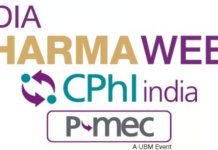- New five-year commitment includes donation of treatments worth more than USD 40 million and is expected to reach an estimated 1.3 million patients
- Novartis Foundation’s new leprosy contact tracing program now launched in five countries
- The company and foundation have a strong legacy in the fight against leprosy, donating medicines and developing programs to improve care of patients
Basel, Aug 28, 2015 – Novartis has renewed its pledge with the World Health Organization (WHO) to work to end leprosy by extending its donation of multidrug therapy (MDT) medicines to treat leprosy through the year 2020. This five-year agreement includes treatments worth more than USD 40 million and up to USD 2.5 million to support the WHO in handling the donation and logistics. Overall it is expected that the program will reach an estimated 1.3 million patients during the next five years. This is part of the company’s commitment in 2012 to the London Declaration on Neglected Tropical Diseases.
“Leprosy is a treatable disease and multidrug therapy remains the cornerstone of the global leprosy elimination strategy,” said Joseph Jimenez, CEO of Novartis. “We are proud to continue our work with the WHO to provide free treatment to leprosy patients worldwide. We also remain committed to our ongoing collaboration with governments, international agencies, nongovernmental organizations and the private sector to bring leprosy back onto the global health agenda and work toward our common goal of making leprosy history.”
Novartis and the Novartis Foundation have a long-term commitment to leprosy treatment and control. Since 2000, Novartis has donated more than 56 million blister packs valued at approximately USD 90 million through the WHO, helping to treat more than six million leprosy patients worldwide.
The Novartis Foundation has been active in the fight against leprosy for nearly 30 years, previously focusing on innovative social marketing programs to reduce the stigma attached to leprosy and supporting patient rehabilitation.
In 2014, the Novartis Foundation launched a new leprosy elimination strategy developed with the top leprosy and disease elimination experts. The program includes four pillars: early detection and treatment, contact tracing and preventative treatment, surveillance and response and the development of diagnostic tools for faster and earlier diagnosis. The Novartis Foundation also helps to facilitate the logistics of the MDT donation with the WHO.
LPEP (Leprosy Post-Exposure Prophylaxis), a key program in the new strategy, has recently launched in India, Indonesia, Myanmar, Nepal and Tanzania, with a pilot in Sri Lanka planned for launch later this year. LPEP is designed to decrease the risk of developing leprosy, and reduce further transmission of the mycobacteria causing the disease. In this project, being done in collaboration with International Federation of Anti-Leprosy Associations (ILEP) partners, the family, friends and other contacts of newly diagnosed patients are examined for leprosy and provided treatment if they also have leprosy, or preventative therapy if they are asymptomatic. This could decrease the risk of contacts developing leprosy in the years following contact by as much as 50-60%. CCI Newswire






















